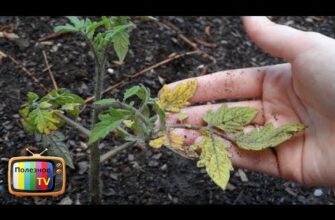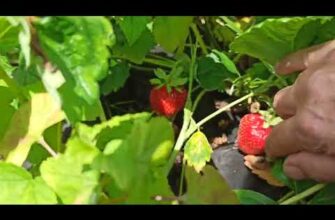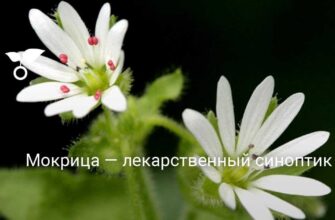- Крупноплодные томаты
- 1. Сорт «Черный принц»
- 2. Сорт «Мясной»
- 3. Сорт «Сибирский розовый»
- 4. Сорт «Андреевский»
- 5. Сорт «Гигантское дерево»
- Сладкие сорта томатов
- 1. Томат «Сан-Марцано»
- 2. Томат «Черри»
- 3. Томат «Желтый пирожок»
- 4. Томат «Малиновый куст»
- 5. Томат «Ананасный»
- Раннеспелые томаты
- Универсальные сорта томатов
- 1. Томат «Амур»
- 2. Томат «Сан-Марцано»
- 3. Томат «Черри»
- 4. Томат «Бойл»
- 5. Томат «Мармандайн»
- Высокоурожайные томаты
- Черри-помидоры
- 1. Сорт «Санголд»
- 2. Сорт «Суперсвитс»
- 3. Сорт «Черри Бомба»
- 4. Сорт «Канди Бей»
- 5. Сорт «Сливка»
- Мясистые томаты
- Сорта для выращивания в горшках
- 1. Сорт «Черри»
- 2. Сорт «Белый снег»
- 3. Сорт «Сан-Марцано»
- 4. Сорт «Тёмный шоколад»
- 5. Сорт «Малиновая девочка»
- Оригинальные сорта томатов
- Красавица Москвы
- Черная капля
- Синий томат
- Розовые томаты
- Вопрос-ответ:
- Какие сорта томатов подходят для выращивания в условиях городской квартиры?
- Какие сорта томатов наиболее устойчивы к заболеваниям и вредителям?
- Какие сорта томатов наиболее подходят для консервирования?
- Какие сорта томатов рекомендуется выращивать на открытом грунте?
- Какой сорт томатов подойдет для приготовления свежего салата?
- Видео:
- 65 ЛЕТ САЖАЮ ТОЛЬКО ЭТОТ СОРТ ТОМАТОВ! Помидор НАРОСТАЮТ Тонны И Никогда Не Болеют!
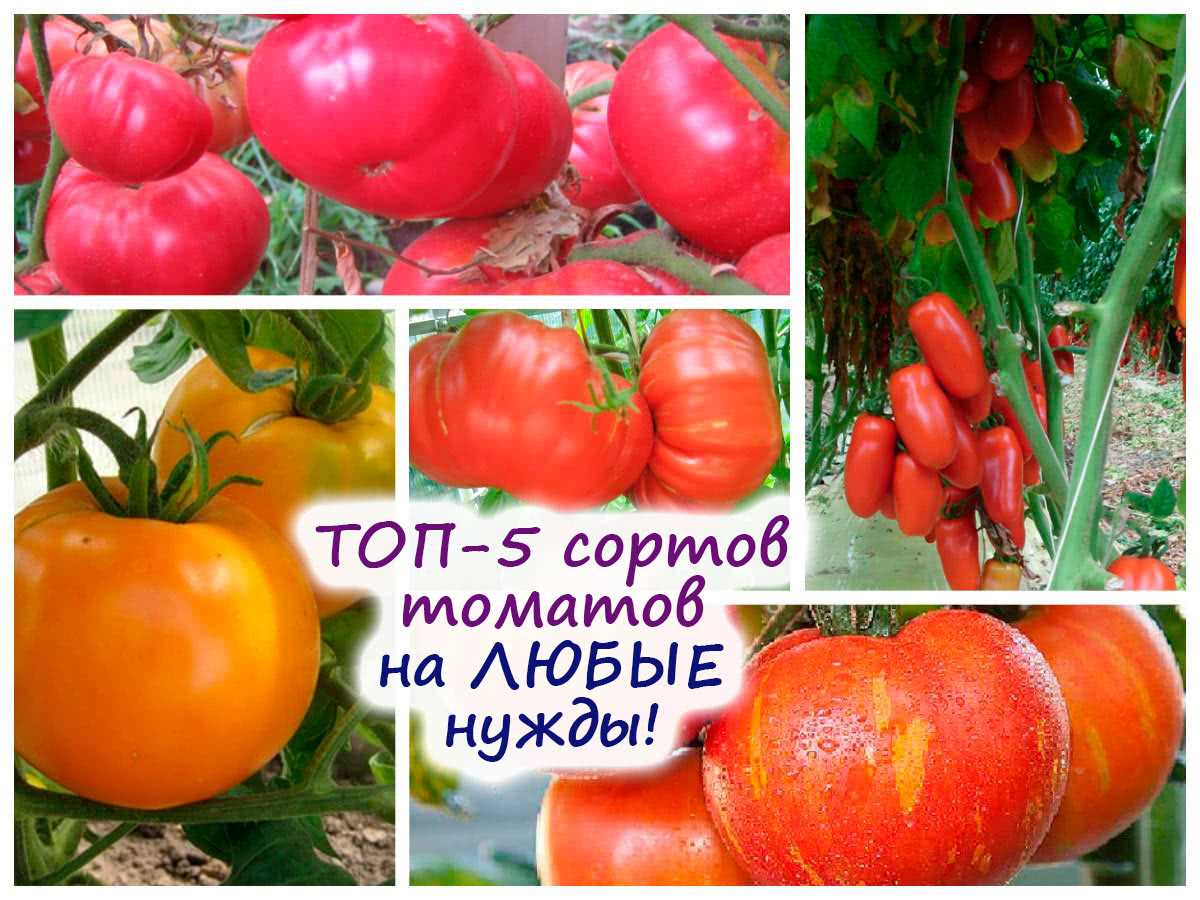
Томаты – одна из самых популярных культур в саду и на огороде. Выращивание своих собственных томатов позволяет получить свежие и вкусные плоды, богатые витаминами и полезными веществами. Однако для достижения наилучших результатов необходимо выбрать правильный сорт томата, который соответствует вашим целям.
В этой статье мы рассмотрим ТОП-5 лучших сортов томатов, подходящих для любых целей. Каждый из этих сортов отличается своими уникальными характеристиками и имеет свои преимущества. Будь вы любителем салатов, соков, консервации или жареных томатов – вам обязательно найдется сорт, который станет настоящей находкой для вас.
Среди топ-5 лучших сортов томатов вы найдете как популярные и хорошо известные варианты, так и новинки, которые уже успели завоевать сердца многих садоводов. Качество плодов, устойчивость к болезням, вкусовые качества и урожайность – все эти факторы были учтены при составлении нашего топа. Теперь вы сможете выбрать лучший сорт томата для своего сада или огорода без проблем и с уверенностью в его отличных характеристиках.
Крупноплодные томаты
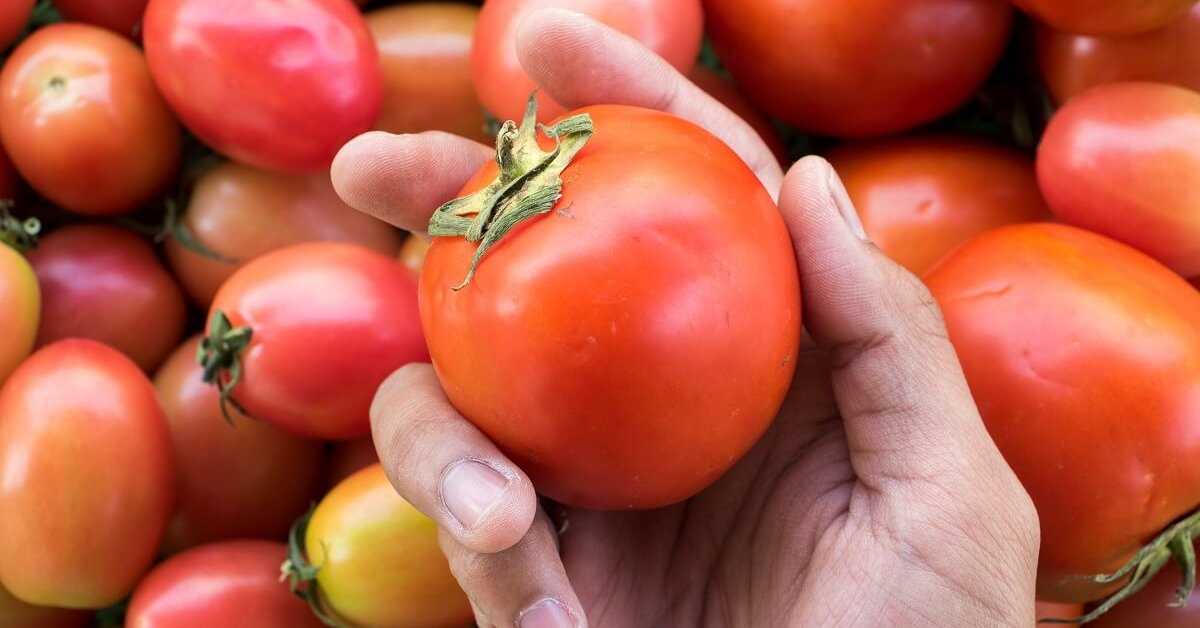
Крупноплодные томаты — это сорта томатов, чьи плоды отличаются большим размером и весом. Они подходят для самых разных целей, будь то использование в свежем виде, консервирование или приготовление соусов. В этом топ-5 лучших сортов томатов представлены именно крупноплодные сорта, которые обладают высокими вкусовыми качествами и урожайностью.
1. Сорт «Черный принц»

Этот сорт томатов отличается не только крупными плодами, но и необычным цветом – они имеют насыщенную темно-коричневую окраску. «Черный принц» обладает отличным сладким вкусом и сочной мякотью. Эти томаты отлично подходят для приготовления соусов и салатов.
2. Сорт «Мясной»
Сорт «Мясной» получил свое название благодаря своей мясистой структуре и насыщенному вкусу. Плоды этого сорта имеют крупный размер и ярко-красный цвет. «Мясной» томат идеально подходит для использования в свежем виде, а также для консервирования.
3. Сорт «Сибирский розовый»
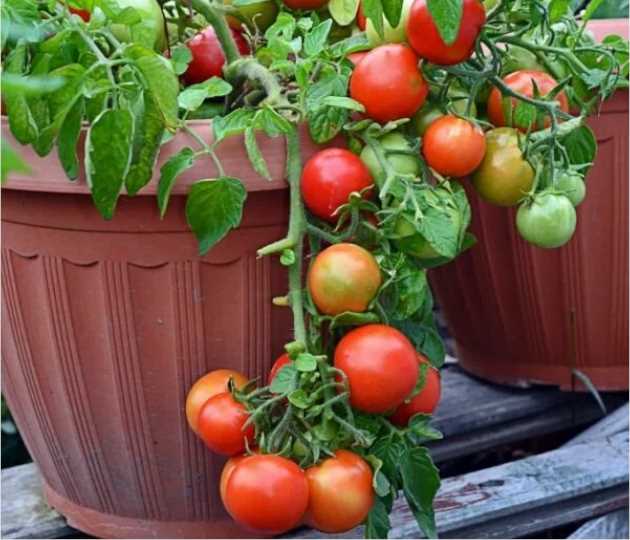
Сорт «Сибирский розовый» отличается крупными и сочными плодами. Они имеют нежно-розовую окраску и сладкий вкус. Эти томаты отлично подходят для приготовления салатов и соусов, а также для консервирования.
4. Сорт «Андреевский»

Сорт «Андреевский» пользуется популярностью благодаря своим крупным и сочным плодам. Они имеют насыщенный красный цвет и сладкий вкус. «Андреевский» томат отлично подходит для использования в свежем виде, а также для приготовления соусов и салатов.
5. Сорт «Гигантское дерево»
Сорт «Гигантское дерево» отличается огромными плодами размером до 1 кг. Эти томаты имеют сладкий вкус и сочную мякоть. Они идеально подходят для использования в свежем виде и для приготовления салатов.
Крупноплодные сорта томатов из этого топ-5 представляют лучшие из лучших сортов для различных целей. Они отличаются высокими вкусовыми качествами, урожайностью и крупными плодами, которые прекрасно подходят для использования в свежем виде, консервирования и приготовления различных блюд.
Сладкие сорта томатов
В мире существует огромное разнообразие сортов томатов, и каждый из них имеет свои особенности и применение. Однако, если вашей целью является получение сладких и сочных томатов, то следует обратить внимание на следующие топ-5 сортов.
1. Томат «Сан-Марцано»
Этот сорт томата известен своим высоким содержанием сахара и насыщенным вкусом. Он идеально подходит для приготовления томатных соусов, паст и супов. Томаты «Сан-Марцано» часто используются в итальянской кухне и считаются одними из лучших для консервирования.
2. Томат «Черри»
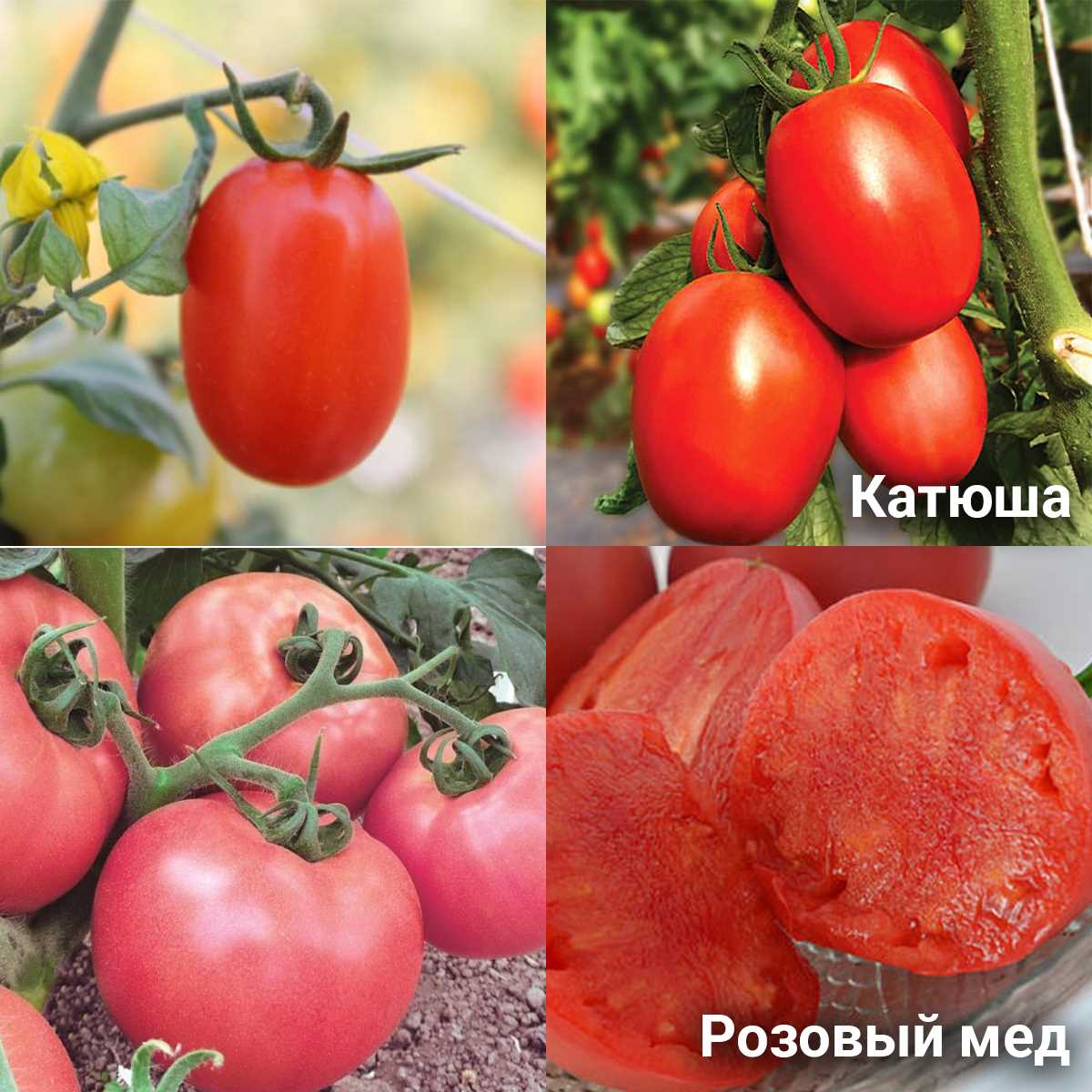
Сладкие томаты «Черри» маленького размера идеально подходят для употребления в свежем виде. Они нежные, сочные и имеют насыщенный сладкий вкус. Этот сорт томатов широко используется в салатах, закусках и гарнирах.
3. Томат «Желтый пирожок»
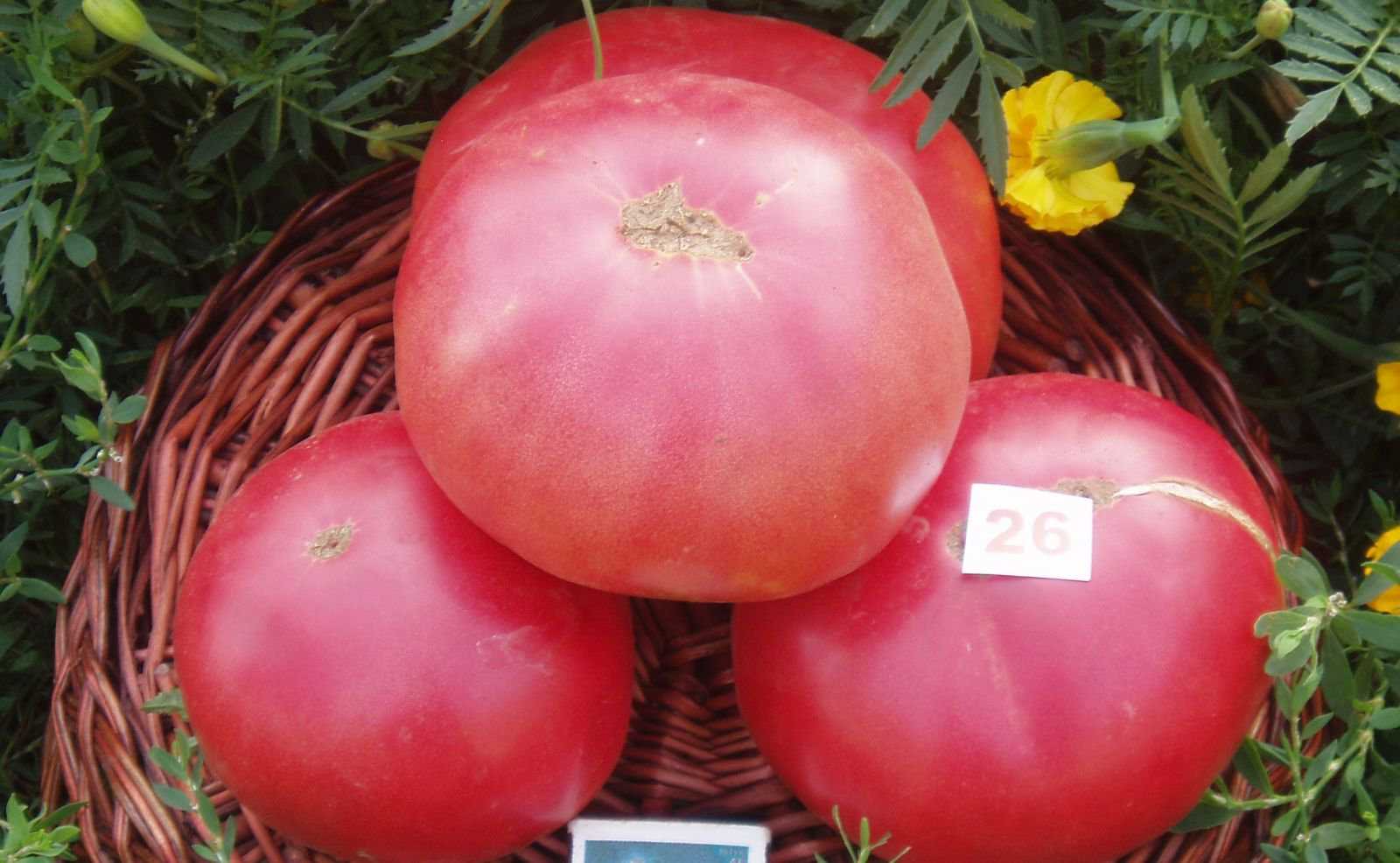
Томаты этого сорта отличаются не только своим ярким желтым цветом, но и нежным сладким вкусом. Они идеально сочетаются с другими овощами и зеленью, идеально подходят для свежих салатов и сэндвичей.
4. Томат «Малиновый куст»
Этот сорт томатов отличается крупными плодами и сладким вкусом. Он идеально подходит для приготовления соков, томатных пюре и домашнего кетчупа. Благодаря своим качествам, томат «Малиновый куст» пользуется популярностью среди дачников и садоводов.
5. Томат «Ананасный»
Этот сорт томата отличается необычным внешним видом и сладким ароматом. Он имеет ярко-желтую кожицу с красными полосками, что придает ему сходство с ананасом. Томат «Ананасный» обладает нежным сладким вкусом и часто используется в свежих салатах и приготовлении различных соусов.
Выбрав один из этих пяти сортов томатов, вы сможете насладиться вкусом настоящих сладких и сочных томатов. Их использование в различных блюдах придаст им особый шарм и удовольствие.
Раннеспелые томаты
Томаты — это одна из самых популярных овощных культур в нашей стране. В саду или на приусадебном участке они занимают особое место и широко используются для приготовления различных блюд. Одним из самых важных параметров при выборе сорта томатов является их срок созревания. Раннеспелые сорта томатов обладают рядом преимуществ, которые делают их наиболее популярными среди садоводов и огородников.
Раннеспелые сорта томатов — это те, которые созревают на 20-30 дней раньше стандартных сортов. Они позволяют получить первые урожаи уже в июне, что особенно актуально для регионов с короткими летними сезонами. Такие томаты имеют меньший период от появления первых побегов до созревания плодов, что позволяет получить более ранние и более стабильные урожаи.
Среди лучших раннеспелых сортов томатов можно выделить «Ранет», «Санта», «Эльгра», «Турбина», «Оливья». Эти сорта отличаются отличным вкусом, плотной плодоножкой и высокой устойчивостью к болезням. Благодаря своей ранней зрелости, они позволяют получить большой урожай к началу лета, а также выращивать томаты в условиях короткого летнего сезона.
Если вы хотите насладиться свежими томатами еще до начала основного урожая, то раннеспелые сорта томатов — это ваш выбор. Они прекрасно подойдут для приготовления салатов, закусок или просто для употребления в свежем виде. Высокие показатели вкусовых качеств делают эти сорта наиболее популярными и позволяют им занимать почетное место в топе лучших сортов томатов для любых целей.
Универсальные сорта томатов
В мире существует множество сортов томатов, но не все из них подходят для различных целей. Однако есть несколько сортов, которые можно назвать универсальными, так как они отлично подходят для любых целей.
1. Томат «Амур»
Этот сорт томата занимает одно из лидирующих мест в топе лучших сортов. «Амур» отличается от других сортов своей устойчивостью к болезням и неприхотливостью в выращивании. Плоды этого сорта имеют плотную мякоть и сладкий вкус, что делает его идеальным выбором для приготовления салатов, соусов и кетчупов.
2. Томат «Сан-Марцано»
Сорт «Сан-Марцано» известен своими мясистыми плодами с минимальным количеством сока. Этот сорт идеально подходит для консервирования и приготовления соусов. «Сан-Марцано» также отличается высоким содержанием ликопина, который является мощным антиоксидантом и полезен для здоровья.
3. Томат «Черри»

Сорт «Черри» пользуется большой популярностью благодаря своим маленьким, сладким плодам. Этот сорт отлично подходит для украшения салатов и закусок, а также для приготовления коктейлей и десертов. «Черри» также является отличным источником антиоксидантов и витамина C.
4. Томат «Бойл»
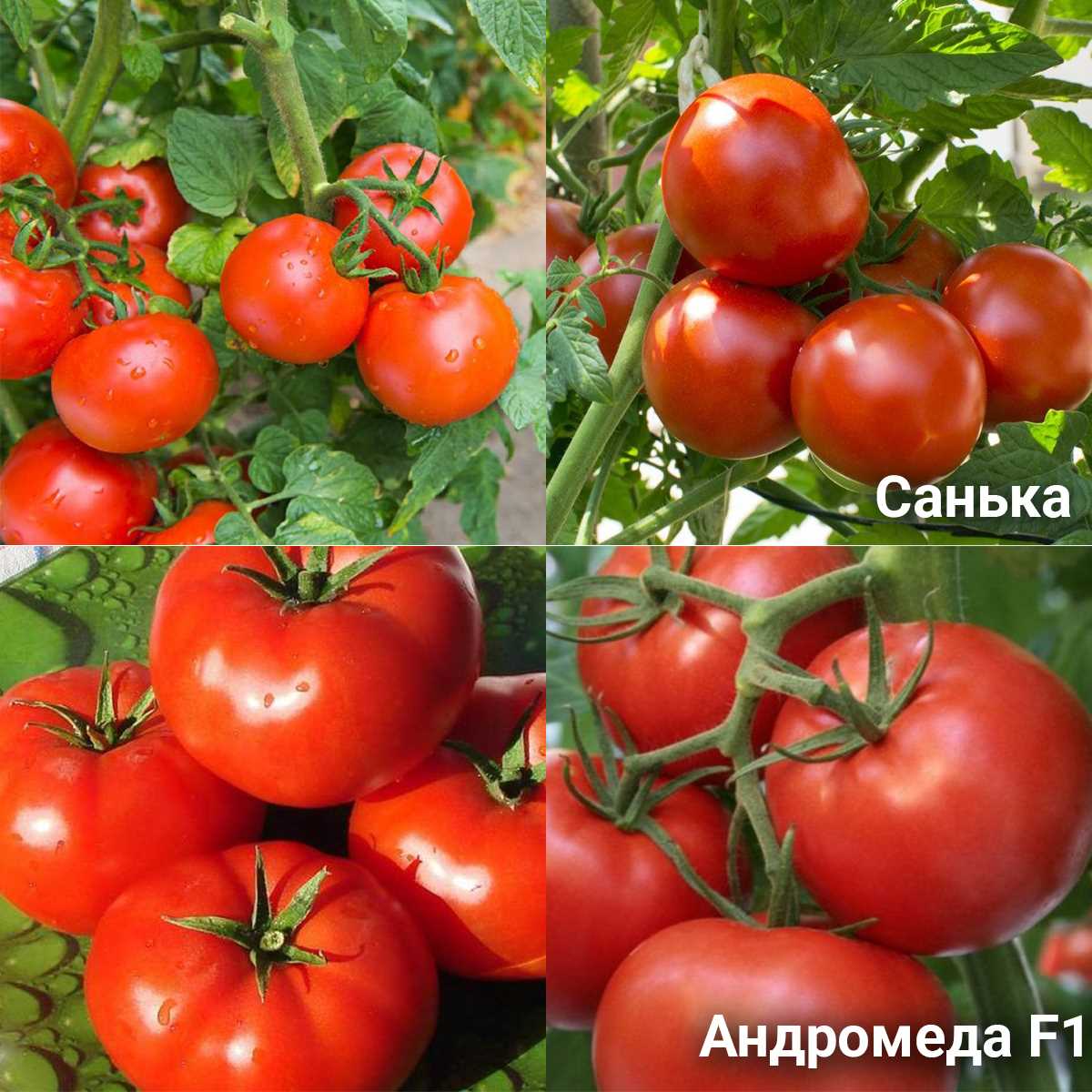
Сорт «Бойл» известен своими крупными, сочными плодами и сладким вкусом. Этот сорт идеально подходит для приготовления салатов, соков, томатных паст и кетчупов. «Бойл» также отличается высоким содержанием витаминов и минералов.
5. Томат «Мармандайн»
Сорт «Мармандайн» отличается своими красивыми оранжевыми плодами и сладким вкусом. Этот сорт идеально подходит для приготовления салатов, закусок, а также для украшения блюд. «Мармандайн» также богат антиоксидантами и полезными веществами для организма.
Эти универсальные сорта томатов прекрасно подойдут для любых целей – от приготовления салатов и соусов до консервирования и украшения блюд. Каждый из них имеет свои особенности и преимущества, но все они являются лучшими в своем роде.
Высокоурожайные томаты
Для получения обильного урожая томатов необходимо выбирать самые лучшие сорта. Среди множества разнообразных целей, которые можно преследовать при выращивании томатов, одной из главных является получение большого количества плодов. Для этой цели подходят высокоурожайные сорта томатов.
Так стоп!!! Вы всё ещё не подписаны на наши каналы в Телеграмм и Дзен? Посмотрите: ТГ - (@historyfantasydetectivechat) и Дзен (https://dzen.ru/myshortsstorys)
ТОП-5 высокоурожайных сортов томатов:
- Сорт 1: Первый сорт из ТОП-5 — это сорт, который отличается особенно высокой продуктивностью. Вот почему он занимает первое место в нашем списке.
- Сорт 2: Второй сорт из ТОП-5 — это еще один великолепный сорт томата, который радует своим большим урожаем. Он также имеет отличные вкусовые качества, что делает его идеальным выбором.
- Сорт 3: Третий сорт из ТОП-5 также обладает высокой урожайностью и прекрасным вкусом. Этот сорт подходит как для выращивания в открытом грунте, так и в теплице.
- Сорт 4: Четвертый сорт из ТОП-5 отличается не только высокой продуктивностью, но и хорошей устойчивостью к различным заболеваниям. Это делает его особенно популярным среди садоводов.
- Сорт 5: Пятый сорт из ТОП-5 — это еще один высокоурожайный сорт томата, который отличается отличным вкусом и красивыми плодами. Он подходит для любых целей и прекрасно смотрится на столе.
Высокоурожайные сорта томатов — это лучший выбор для тех, кто хочет получить максимальное количество плодов. Выбирая сорт из ТОП-5, вы можете быть уверены, что ваш урожай будет богатым и качественным.
Черри-помидоры
Черри-помидоры — это маленькие, округлые плоды, которые отлично подходят для использования в салатах, закусках и гарнирах. Существует множество сортов черри-помидоров, но ниже представлены пять лучших сортов для различных целей.
1. Сорт «Санголд»
Этот сорт черри-помидоров отличается ярким оранжевым цветом и сладким вкусом. Он идеально подходит для приготовления салатов и закусок, так как его яркая окраска придает блюдам привлекательность. «Санголд» также хорошо держится на ветке и имеет высокую устойчивость к болезням.
2. Сорт «Суперсвитс»
Этот сорт черри-помидоров отличается крупными плодами и высокой урожайностью. «Суперсвитс» имеет сладкий вкус и сочную мякоть, что делает его идеальным для приготовления гарниров и добавления в салаты. Кроме того, этот сорт хорошо сохраняет свежесть и устойчив к различным болезням.
3. Сорт «Черри Бомба»
Этот сорт черри-помидоров отличается ярким красным цветом и уникальным вкусом. «Черри Бомба» имеет сладкую и сочную мякоть, которая прекрасно сочетается с другими ингредиентами в салатах и закусках. Этот сорт также обладает хорошей урожайностью и высокой устойчивостью к болезням.
4. Сорт «Канди Бей»
Этот сорт черри-помидоров отличается красивым желтым цветом и сладким вкусом. «Канди Бей» идеально подходит для использования в салатах и закусках, так как его яркая окраска придает блюдам привлекательность. Кроме того, этот сорт обладает хорошей урожайностью и долго сохраняет свежесть.
5. Сорт «Сливка»
Этот сорт черри-помидоров отличается нежно-желтым цветом и сладким, нежным вкусом. «Сливка» идеально подходит для использования в салатах, закусках и гарнирах, так как его мякоть имеет нежную текстуру и приятный вкус. Кроме того, этот сорт обладает высокой урожайностью и хорошей устойчивостью к болезням.
Мясистые томаты
Мясистые томаты – одни из самых популярных и востребованных сортов. Они отличаются высоким содержанием мякоти, что делает их идеальными для приготовления различных блюд. Эти томаты также идеально подходят для употребления в свежем виде, благодаря своей сочности и мясистости.
Среди топ-5 лучших сортов мясистых томатов можно выделить следующие:
- Бифстековый томат – один из самых крупноплодных сортов, который отличается сочной и мясистой структурой мякоти. Идеально подходит для приготовления гриля и различных соусов.
- Чери – маленькие мясистые томаты, которые отличаются сладким вкусом и насыщенным ароматом. Идеально подходят для приготовления закусок и салатов.
- Сливовый – сорт томата с плодами в форме сливы. Отличается сладким вкусом и плотной мякотью. Идеально подходит для приготовления пасты и томатных соусов.
Выбор мясистых томатов зависит от ваших личных целей. Если вы планируете использовать их для приготовления соусов или консервации, то рекомендуется выбирать сорта с плотной мякотью. Если же вы предпочитаете употреблять томаты в свежем виде, то стоит обратить внимание на сорта с сочной и мясистой структурой мякоти.
Сорта для выращивания в горшках
Томаты – одни из самых популярных овощей, которые можно выращивать в горшках на балконе или в домашних условиях. Однако выбор подходящих сортов для такого выращивания может быть непростым. Наш топ-5 лучших сортов томатов для выращивания в горшках поможет вам сделать правильный выбор.
1. Сорт «Черри»

Этот сорт томатов отличается маленькими размерами плодов, которые имеют круглую или овальную форму. «Черри» имеет очень сладкий вкус и отличается высокой урожайностью. Он идеально подходит для выращивания в горшках, так как его небольшие размеры позволяют разместить несколько растений на небольшой площади.
2. Сорт «Белый снег»
Этот сорт томатов отличается необычным белым цветом плодов. «Белый снег» имеет нежный вкус и хрупкую текстуру. Этот сорт идеально подходит для выращивания в горшках, так как его компактный размер позволяет разместить его даже на небольших окнах или балконах.
3. Сорт «Сан-Марцано»
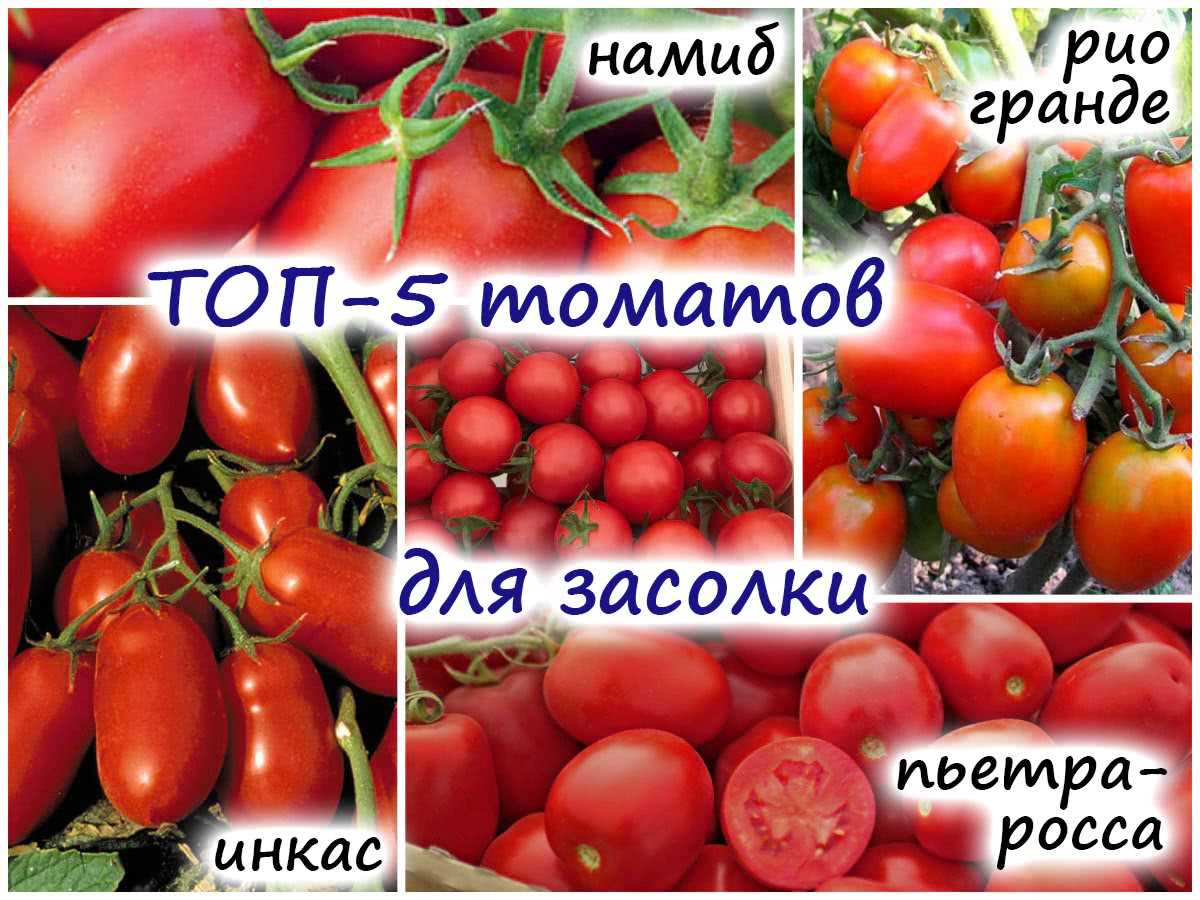
Этот сорт томатов является одним из самых популярных среди садоводов. «Сан-Марцано» отличается высокой урожайностью и идеально подходит для приготовления соусов и пасты. Этот сорт также хорошо растет в горшках и не требует особого ухода.
4. Сорт «Тёмный шоколад»
Этот сорт томатов отличается насыщенным темно-коричневым цветом плодов. «Тёмный шоколад» имеет сладкий вкус и мясистую структуру. Он идеально подходит для выращивания в горшках, так как его компактный размер позволяет разместить его даже на небольших окнах или балконах.
5. Сорт «Малиновая девочка»
Этот сорт томатов отличается красивым малиновым цветом плодов. «Малиновая девочка» имеет сладкий и сочный вкус. Он идеально подходит для выращивания в горшках, так как его компактный размер позволяет разместить его даже на небольших окнах или балконах.
Оригинальные сорта томатов
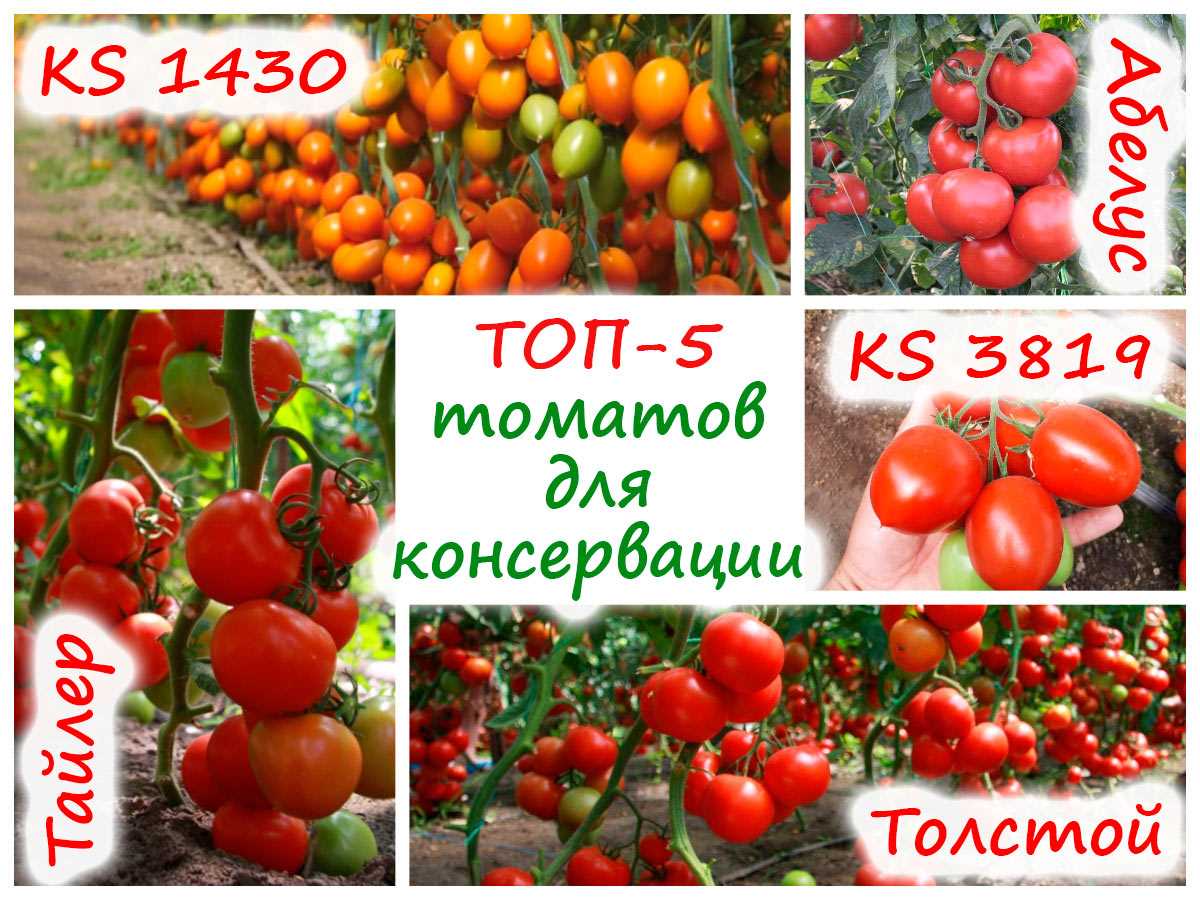
Среди топ-5 лучших сортов томатов для любых целей можно выделить и необычные, оригинальные сорта. Они привлекают внимание своим необычным внешним видом и вкусом.
Красавица Москвы
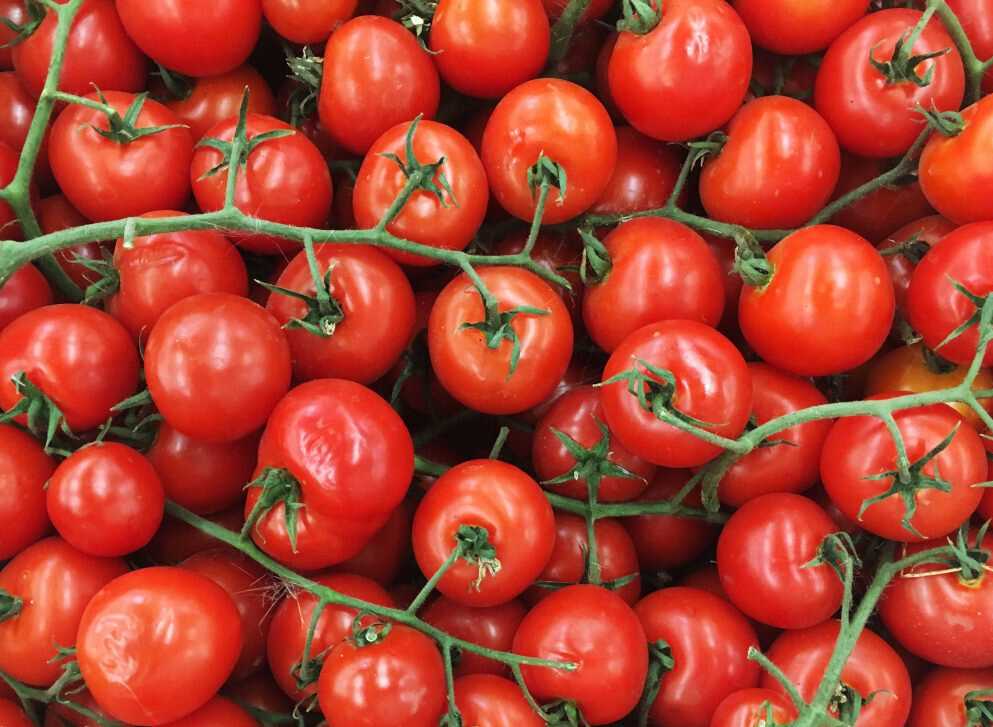
Один из самых оригинальных сортов томатов – Красавица Москвы. Его плоды имеют необычную округлую форму с ребристостью, напоминающей розу. Они красиво выглядят на тарелке и прекрасно дополняют салаты и другие блюда своим сладким и сочным вкусом.
Черная капля

Еще один оригинальный сорт томатов – Черная капля. Его плоды имеют необычную форму, напоминающую каплю. Они имеют темно-фиолетовый цвет и отличаются своим нежным и сладким вкусом. Этот сорт часто используют для приготовления необычных салатов и соусов.
Синий томат
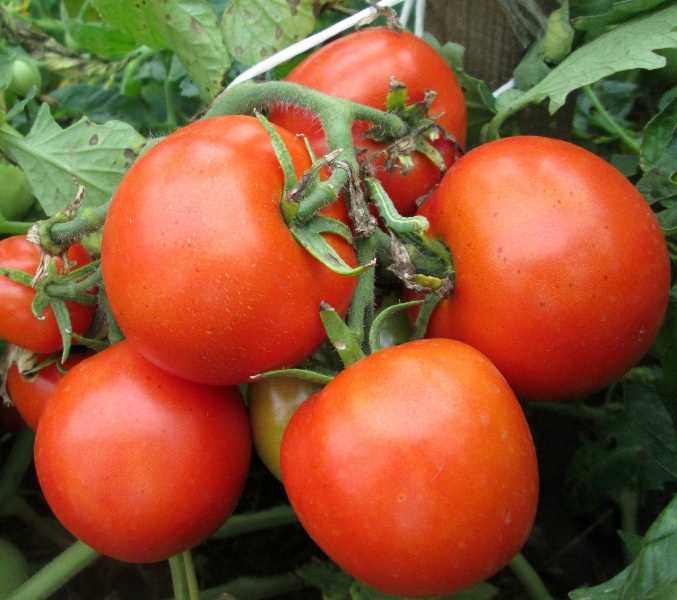
Синий томат – еще один оригинальный сорт, который привлекает внимание своим необычным цветом. Его плоды имеют голубой оттенок и обладают освежающим вкусом с легкой кислинкой. Этот сорт идеально подходит для приготовления оригинальных салатов и гарниров.
Такие оригинальные сорта томатов придадут вашим блюдам особый шарм и удивят ваших гостей своим необычным внешним видом и вкусом. Используйте их для приготовления разнообразных блюд и наслаждайтесь новыми вкусовыми открытиями.
Розовые томаты
Розовые томаты — это разнообразие сортов, имеющих нежный розовый оттенок. Они являются одним из топ-5 самых популярных сортов томатов благодаря своему вкусу и внешнему виду.
Сортов розовых томатов существует множество, но стоит отметить несколько из лучших. Среди них: «Розовый Гигант», «Розовая Леди», «Розовый Пирог», «Розовая капля», «Розовый Черри». Каждый из этих сортов обладает своим уникальным вкусом и характеристиками.
Сорт «Розовый Гигант» отличается крупными плодами и сладким пряным вкусом. Он идеально подходит для приготовления соусов и салатов. «Розовая Леди» имеет мясистые плоды с нежным сладким вкусом, идеально подходит для приготовления свежих салатов и гарниров.
«Розовый Пирог» отличается нежной кожицей и сочным мякотью. Этот сорт подходит для консервации и приготовления томатного сока. «Розовая капля» имеет плоды в форме капли с мясистой и сочной мякотью. Они отлично подходят для приготовления салатов и закусок.
Сорт «Розовый Черри» представляет собой маленькие плоды с интенсивным сладким вкусом. Они идеально подходят для приготовления закусок и декорирования блюд.
Вопрос-ответ:
Какие сорта томатов подходят для выращивания в условиях городской квартиры?
Для выращивания в квартире лучше всего подходят компактные сорта томатов, такие как «Черри», «Бонджорно», «Балконное чудо». Они имеют небольшие размеры куста и хорошо адаптируются к индор-условиям.
Какие сорта томатов наиболее устойчивы к заболеваниям и вредителям?
Среди сортов томатов, которые имеют хорошую устойчивость к заболеваниям и вредителям, можно выделить «Сан-Марцано», «Голден Кинг», «Трюфельное дерево». Они обладают высокими иммунитетом и редко поражаются болезнями или вредителями.
Какие сорта томатов наиболее подходят для консервирования?
Для консервирования лучше всего использовать плотно мясистые сорта томатов, такие как «Рио Гранде», «Сан-Марцано», «Аматричиана». Они отлично сохраняют форму и текстуру после термической обработки.
Какие сорта томатов рекомендуется выращивать на открытом грунте?
На открытом грунте хорошо растут сорта томатов, которые имеют хорошую устойчивость к изменению погодных условий и морозам, например, «Сибирский сад», «Розовый гигант», «Золотой ключик». Они характеризуются высокой морозоустойчивостью и отлично созревают на открытом воздухе.
Какой сорт томатов подойдет для приготовления свежего салата?
Для свежего салата лучше всего выбрать сорта томатов, которые обладают сочным мякотью и сладким вкусом, например, «Черри», «Тигрелла», «Бычье сердце». Они идеально подходят для приготовления салатов, так как добавляют им сочность и аромат.


